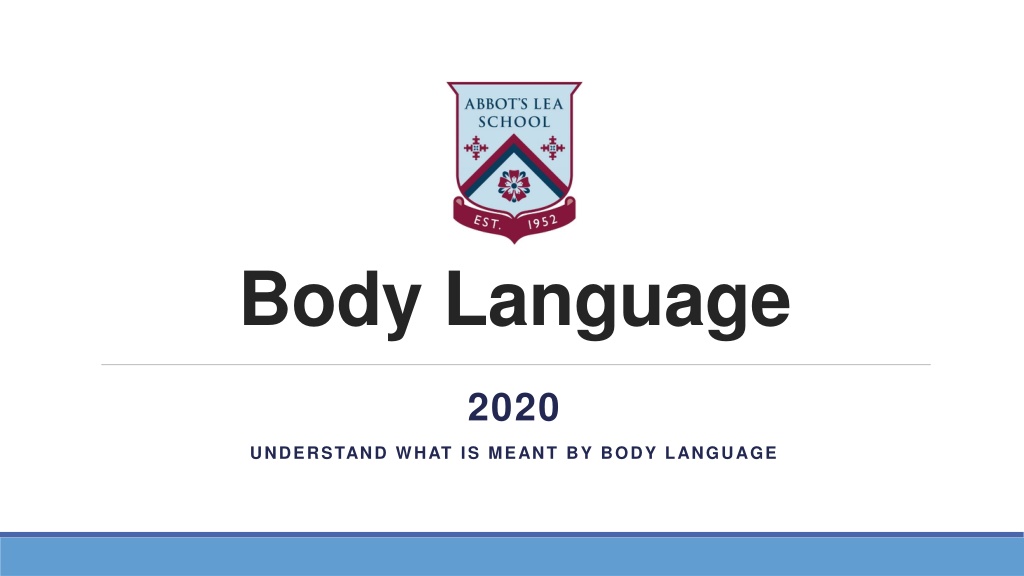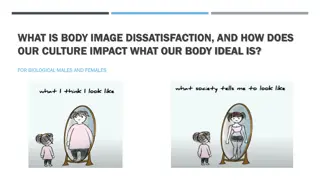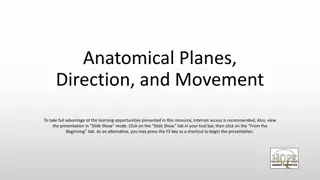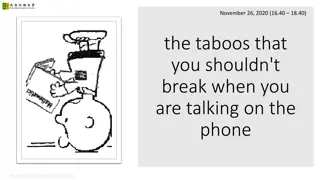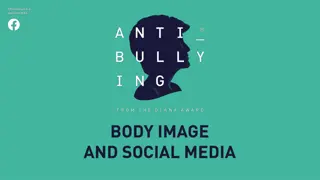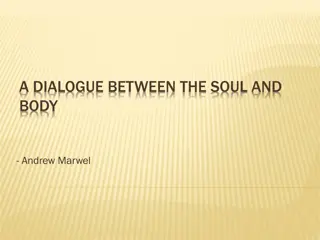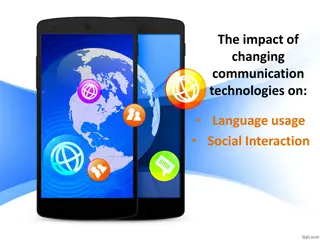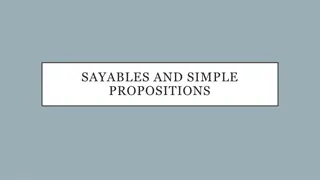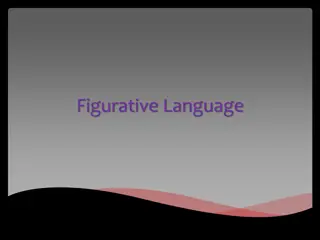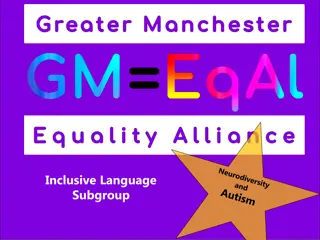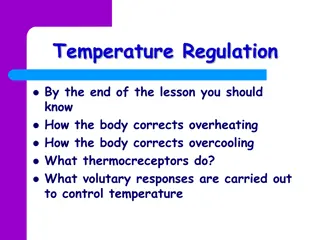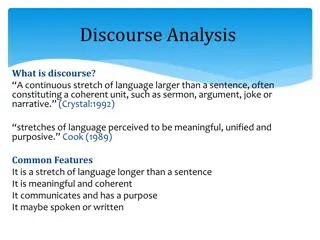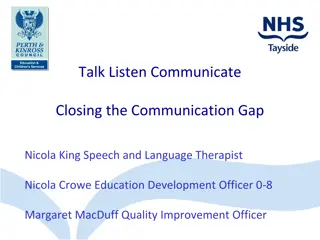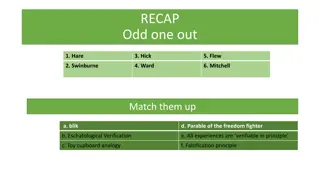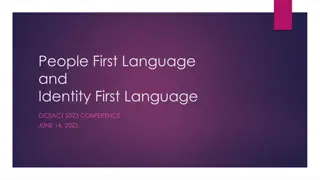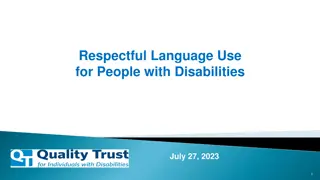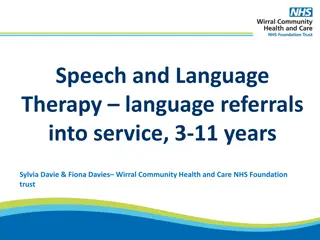Understanding Body Language: A Comprehensive Guide
Body language is a form of nonverbal communication that involves physical behaviors to convey information. This includes facial expressions, body posture, gestures, eye movement, touch, and use of space. Understanding and interpreting body language involves analyzing aspects like eye contact, facial expressions, tone of voice, posture, gestures, touch, intensity, timing, and sounds. Reading people's body language involves both decoding their cues and encoding your own to control personal branding and interactions. Nonverbal communication plays roles such as repetition, contradiction, substitution, complementing, and accenting in conveying messages effectively.
Download Presentation

Please find below an Image/Link to download the presentation.
The content on the website is provided AS IS for your information and personal use only. It may not be sold, licensed, or shared on other websites without obtaining consent from the author. Download presentation by click this link. If you encounter any issues during the download, it is possible that the publisher has removed the file from their server.
E N D
Presentation Transcript
Body Language 2020 UNDERSTAND WHAT IS MEANT BY BODY LANGUAGE
What is body language? Body language is a type of a nonverbal communication in which physical behaviors, as opposed to words, are used to express or convey the information. Such behavior includes facial expressions, body posture, gestures, eye movement, touch and the use of space.
Types of Body Language Eye contact Is the person making eye contact? If so, is it overly intense or just right? Facial expression What is their face showing? Is it masklike and unexpressive, or emotionally present and filled with interest? Tone of voice Does the person s voice project warmth, confidence, and interest, or is it strained and blocked? Posture and gesture Is their body relaxed or stiff and immobile? Are their shoulders tense and raised, or relaxed? Touch Is there any physical contact? Is it appropriate to the situation? Does it make you feel uncomfortable? Intensity Does the person seem flat, cool, and disinterested, or over-the-top and melodramatic? Timing and place Is there an easy flow of information back and forth? Do nonverbal responses come too quickly or too slowly? Sounds Do you hear sounds that indicate interest, caring or concern from the person?
How to read peoples body language. There are actually two sides to reading body language in others. Decoding is your ability to read people s cues. It is how you interpret hidden emotions, information and personality from someone s nonverbal. Encoding is your ability to send cues to other people. This is how you control your personal branding, what first impression you give and how you make people feel when they are with you.
Nonverbal communication can play five roles: Repetition: It repeats and often strengthens the message you re making verbally. Contradiction: It can contradict the message you re trying to convey, thus indicating to your listener that you may not be telling the truth. Substitution: It can substitute for a verbal message. For example, your facial expression often conveys a far more vivid message than words ever can. Complementing: It may add to or complement your verbal message. As a boss, if you pat an employee on the back in addition to giving praise, it can increase the impact of your message. Accenting: It may accent or underline a verbal message. Pounding the table, for example, can underline the importance of your message.
Here are some example of poor body language. Arms crossed over the chest. This example of body language can indicate that a person is being defensive. It can also demonstrate that the individual with crossed arms disagrees with the opinions or actions of other individuals with whom they are communicating. Nail biting. Nail biting is a type of habit than can demonstrate stress, nervousness, or insecurity. Oftentimes people bite their nails without even realizing it. Hand placed on the cheek. This example of body language can indicate that a person is lost in thought, or is considering something. Sometimes when the hand is on the cheek, it is accompanied by a furrowed brow, which further demonstrates deep concentration. Tapping or drumming the fingers. Finger-tapping demonstrates that a person is growing impatient or tired of waiting. Head tilted to one side. A tilted head demonstrates that a person is listening keenly, or is interested in what is being communicated.
Body Language Double Click TO Play Video
Difficult Conversations and Defensiveness Difficult Conversations and Defensiveness Difficult or tense conversations are an uncomfortable fact of life at work. Perhaps you've had to deal with a difficult customer , or needed to talk to someone about his or her poor performance . Or maybe you've negotiated a major contract. Ideally, these situations would be resolved calmly. But, often they are complicated by feelings of nervousness, stress, defensiveness , or even anger . And, though we may try to hide them, these emotions often show through in our body language. For example, if someone is exhibiting one or more of the following behaviours, he will likely be disengaged, disinterested or unhappy (see figure 1): Arms folded in front of the body. Minimal or tense facial expression. Body turned away from you. Eyes downcast, maintaining little contact.
Here are 5 interesting research-based findings about nonverbal communication: 1. Body language is not a language. As mentioned, there is no dictionary for nonverbal communication. The meaning of a particular nonverbal cue, such as a certain gesture or eye movement, can depend on the context, the individual, and the relationship between the sender of the cue and the recipient. The exception are certain gestures, known as emblems gestures that take the place of the spoken word, such as the ok symbol made with thumb and forefinger, or flipping someone the bird the meaning of these emblems is clear!
Fact 2. 2. Invading personal space causes arousal. We carry around with us a bubble of personal space (and some of us have larger bubbles than others). If someone enters our personal space bubble, it causes arousal, but the meaning of that arousal depends on who is invading our space and the context. Understanding the dynamics of personal space offers certain advantages. In a positive encounter/situation a slight intrusion into someone s bubble may trigger arousal that can lead to a positive reaction liking, sexual interest, etc. In a situation involving a struggle for dominance, invading another s space can lead to anger, or perhaps fear, in the other.
Fact 3. 3. Certain facial expressions have universal meaning. There is good evidence that the basic facial expressions anger, happiness, sadness, disgust, surprise, fear are displayed similarly across cultures. We can recognize a happy face in just about anyone in the world. The problem is that it is very hard, without training, to be able to distinguish a genuine display of happiness from a fake, or posed, smile.
Fact 4 4. It takes one to know one. There are individual differences in people s abilities to communicate nonverbally. This is a big part of the construct of emotional intelligence. Certain people are very skilled at clearly expressing themselves nonverbally sending clear messages of emotions, liking, dominance, etc. Others are very good at reading, or decoding, others nonverbal cues. AND, these two abilities are correlated, such that a good sender is more likely to be a good receiver.
Fact 5. 5. Lie detection is almost impossible. There is a belief that we can tell if a person is lying through body language that a liar can t look you in the eye, or displays nervous gestures. But it is nearly impossible to accurately detect lies simply through reading someone s body language. Although deception can cause arousal, people have different arousal displays, so one person might look guilty, and another truthful, regardless of their veracity. There is some research that suggests that there are a few, rare individuals who are able to detect deception at levels above chance, but even these people aren t all that accurate (this research was the basis for the TV show Lie to Me, although the show suggested incorrectly that these deception detectors were almost infallible).
Paperwork: example Take a minute and think of the body language that you use. What does your body language say about you as a person? My body language shows how happy, sad or annoyed I am by the way I am standing and by the way my arms are. I can also show how I am feeling about the situation by using different facial expressions. So if I am speaking to you and I am nodding my head this means I am agreeing with you and I probably understand you. Body Language Below are some nonverbal communicators, below them I would like you to tell me what they mean to you. 1. Smile When someone is smiling at me it means that they are happy.
Thank you! HAVE A LOVELY AFTERNOON
